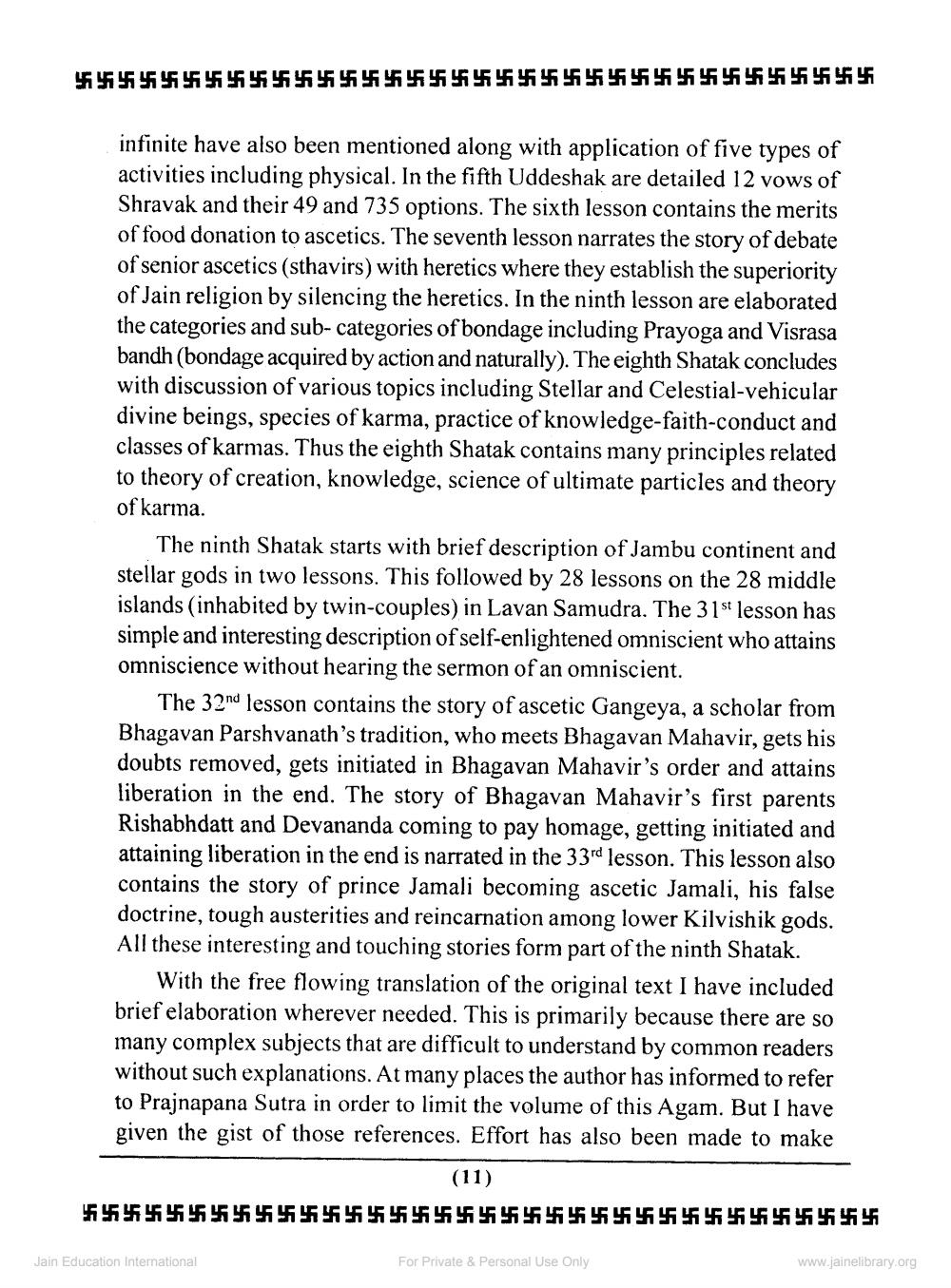________________
454545454545454545454 455 456
457 455 456 457 455 456 457 455 456 457 454 455 456 457 455 456 455 456 45
infinite have also been mentioned along with application of five types of activities including physical. In the fifth Uddeshak are detailed 12 vows of Shravak and their 49 and 735 options. The sixth lesson contains the merits of food donation to ascetics. The seventh lesson narrates the story of debate of senior ascetics (sthavirs) with heretics where they establish the superiority of Jain religion by silencing the heretics. In the ninth lesson are elaborated the categories and sub-categories of bondage including Prayoga and Visrasa bandh (bondage acquired by action and naturally). The eighth Shatak concludes with discussion of various topics including Stellar and Celestial-vehicular divine beings, species of karma, practice of knowledge-faith-conduct and classes of karmas. Thus the eighth Shatak contains many principles related to theory of creation, knowledge, science of ultimate particles and theory of karma.
The ninth Shatak starts with brief description of Jambu continent and stellar gods in two lessons. This followed by 28 lessons on the 28 middle islands (inhabited by twin-couples) in Lavan Samudra. The 31st lesson has simple and interesting description of self-enlightened omniscient who attains omniscience without hearing the sermon of an omniscient.
The 32nd lesson contains the story of ascetic Gangeya, a scholar from Bhagavan Parshvanath's tradition, who meets Bhagavan Mahavir, gets his doubts removed, gets initiated in Bhagavan Mahavir's order and attains liberation in the end. The story of Bhagavan Mahavir's first parents Rishabhdatt and Devananda coming to pay homage, getting initiated and attaining liberation in the end is narrated in the 33rd lesson. This lesson also contains the story of prince Jamali becoming ascetic Jamali, his false doctrine, tough austerities and reincarnation among lower Kilvishik gods. All these interesting and touching stories form part of the ninth Shatak.
With the free flowing translation of the original text I have included brief elaboration wherever needed. This is primarily because there are so many complex subjects that are difficult to understand by common readers without such explanations. At many places the author has informed to refer to Prajnapana Sutra in order to limit the volume of this Agam. But I have given the gist of those references. Effort has also been made to make
(11) 1545454545454545454545454545454545454545454 455 456 457 454 455 456 457 455 456 457 4554
Jain Education International
For Private & Personal Use Only
www.jainelibrary.org




